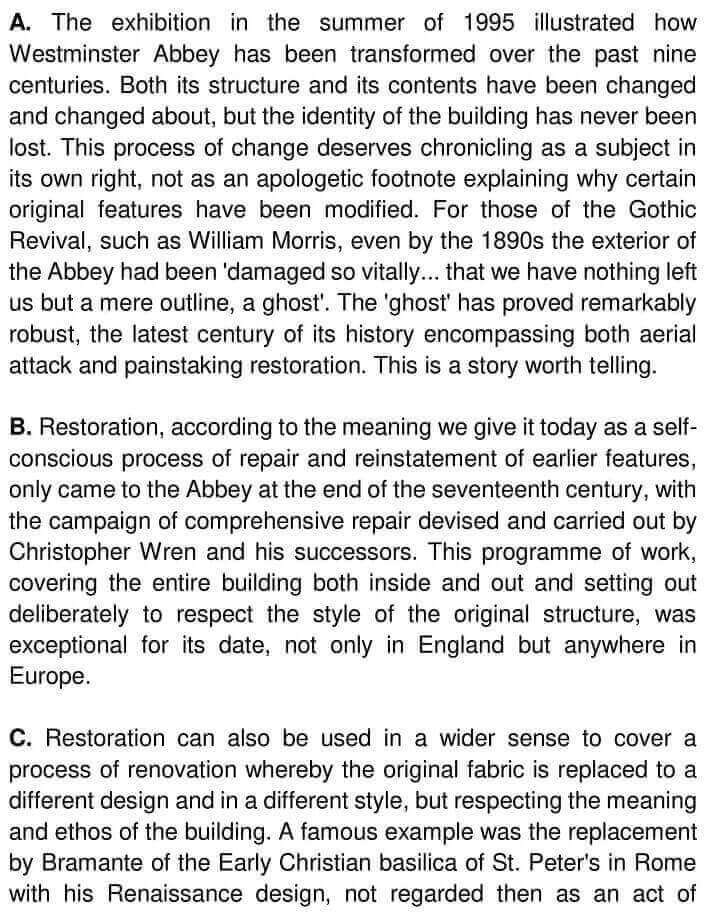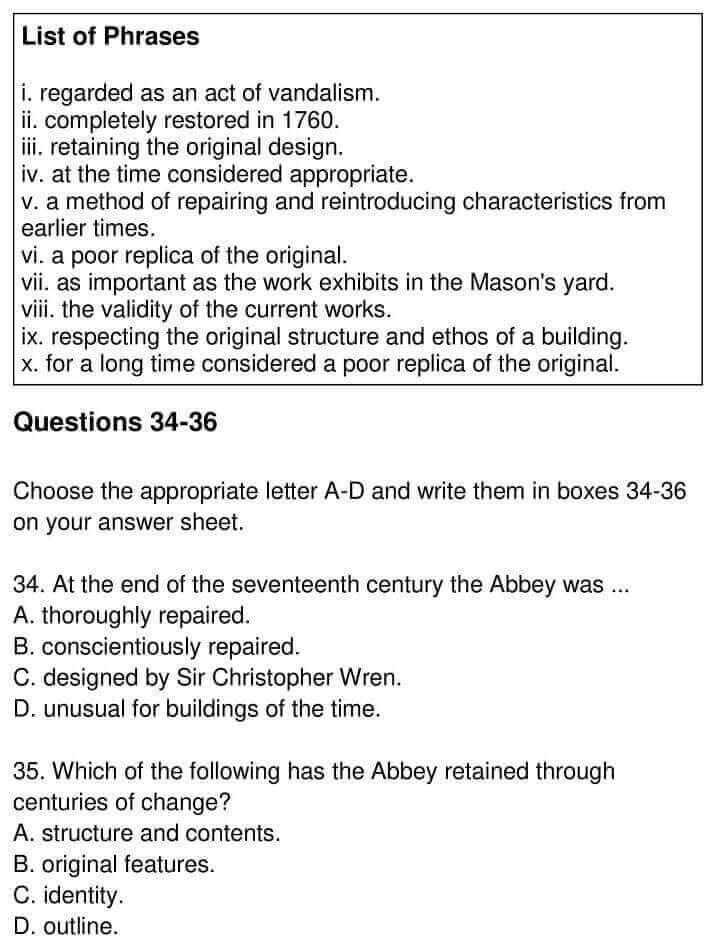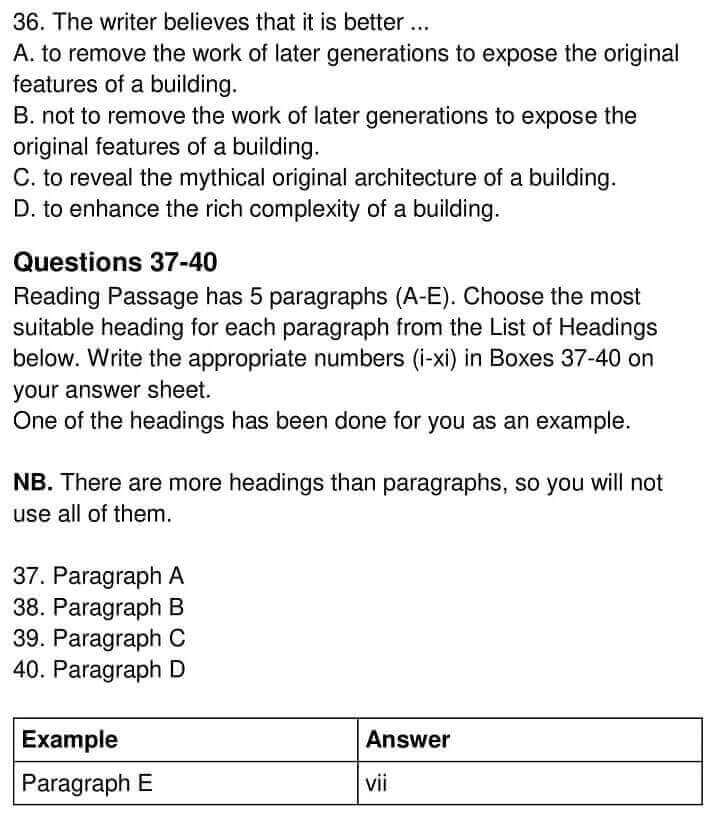900 Years: The Restorations Of Westminster Abbey IELTS Reading Answers
4 min read
Updated On
-
Copy link
Table of Contents

Limited-Time Offer : Access a FREE 10-Day IELTS Study Plan!
The Reading Module of the IELTS can be the top-scoring category, with diligent practice. To achieve the best results in this section, you must understand how to approach and answer the different Question types in the Reading Module. By solving and reviewing Sample Reading Questions from past IELTS papers, you can ensure that your Reading skills are up to the mark.
The Academic passage ‘900 Years: The Restorations Of Westminster Abbey’ is a reading passage that appeared in an IELTS Test.
Ideally, you should not spend more than 20 minutes on a passage. Let’s see how easy this passage is for you and if you’re able to make it in 20 minutes. If not, try more IELTS reading practice test from IELTSMaterial.com
900 Years: The Restorations Of Westminster Abbey






Answers
Unlock Answers
| Question number | Answer | Keywords | Location of keywords |
|---|---|---|---|
| 30 | x | The meaning of restoration at Westminster can be vividly illustrated by an unexpected example: the history of the effigy of Queen Elizabeth I. This figure was dismissed for years as a second-rate eighteenth-century copy of the original. | Paragraph E;
Lines 1 – 2 |
| 31 | iv | A famous example was the replacement by Bramante of the Early Christian basilica of St. Peter’s in Rome with his Renaissance design, not regarded then as an act of vandalism, but as a restatement of the significance of the building for a new age. | Paragraph C;
Line 2 |
| 32 | vii | The two pare gave meaning to each other the historical context gave validity to the current works, showing how this process of organic renewal has been present at the Abbey from the start, while the display of work in progress brought vividly to life the physical reality of the works exhibited. | Paragraph F;
Last line |
| 33 | v | Restoration, according to the meaning we give it today as a self-conscious process of repair and reinstatement of earlier features,
& Restoration can also be used in a wider sense to cover a process of renovation whereby the original fabric is replaced to a different design and in a different style, but respecting the meaning and ethos of the building. |
Paragraph B;
Line 1 & Paragraph C; Line 1 |
| 34 | B | Restoration, according to the meaning we give it today as a self-conscious process of repair and reinstatement of earlier features, only came to the Abbey at the end of the seventeenth century, with the campaign of comprehensive repair devised and carried out by Christopher Wren and his successors. | Paragraph B;
Line 1 |
| 35 | C | Both its structure and its contents have been changed and changed about, but the identity of the building has never been lost. | Paragraph A;
Line 2 |
| 36 | B | It is in this way that the replacement of Edward the Confessor’s Romanesque abbey church (11th century) by Henry III (13th century) in the up-to-date Gothic style can be considered as a work of restoration, not as a new building.
|
Paragraph D;
Last line |
| 37 | iv | This process of change deserves chronicling as a subject in its own right, | Paragraph A;
Line 3 |
| 38 | v | This programme of work, covering the entire building both inside and out and setting out deliberately to respect the style of the original structure, was exceptional for its date, not only in England but anywhere in Europe. | Paragraph B;
Last line |
| 39 | vi | Restoration can also be used in a wider sense to cover a process of renovation whereby the original fabric is replaced to a different design and in a different style, but respecting the meaning and ethos of the building. | Paragraph C;
Line 1 |
| 40 | ii | It is in this way that the replacement of Edward the Confessor’s Romanesque abbey church (11th century) by Henry III (13th century) in the up-to-date Gothic style can be considered as a work of restoration, not as a new building. | Paragraph D;
Last line |
Check More IELTS Reading Answers
Also check :
Practice IELTS Reading based on question types

Start Preparing for IELTS: Get Your 10-Day Study Plan Today!
Recent Articles

Nehasri Ravishenbagam

Haniya Yashfeen

Haniya Yashfeen

Haniya Yashfeen




Post your Comments